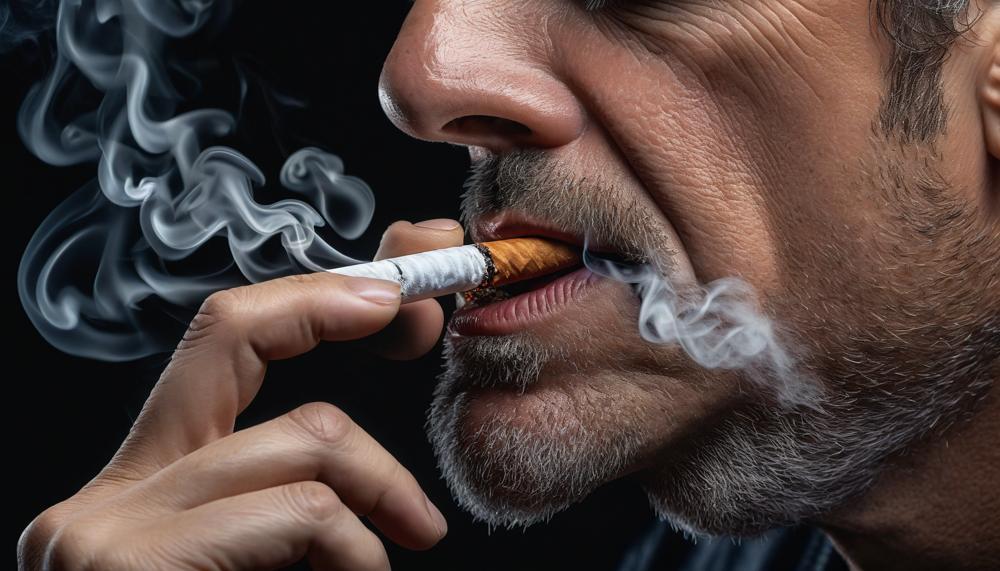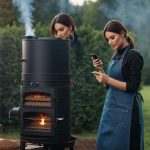In the world of outdoor cooking, the allure of smoking meats is undeniable. Whether you’re a seasoned pitmaster or a novice enthusiast, one question often arises during colder months: can it be too cold to use a smoker effectively?
Smoking meat is a delicate balance of time, temperature, and technique. Cold weather can indeed impact this process, but it doesn’t necessarily mean you have to hang up your tongs until spring. Here’s a straightforward breakdown:
- Temperature Control: Cold weather can make it challenging to maintain consistent temperatures inside the smoker.
- Fuel Efficiency: Smokers may consume more fuel in colder conditions to maintain heat levels.
- Cooking Time: Meats might take longer to cook in a colder smoker environment.
However, with a few adjustments and some preparation, you can still achieve mouthwatering results even when the mercury drops. Understanding your smoker, using quality fuel, and insulating your equipment can all help mitigate the effects of cold weather.
So, while it can be more challenging to use a smoker in cold conditions, it’s certainly not impossible. With the right approach, you can continue to enjoy delicious smoked meats year-round, no matter how frosty it gets outside. Ready to fire up the smoker? Let’s dive into the details of cold-weather smoking.
Contents
PelHeat Pellet Grill/Smoker Database
The PelHeat Pellet Grill/Smoker Database offers valuable insights for users navigating cold weather conditions when using their smoker. Here’s how it can assist:
| Insight | Explanation | Benefit |
| Impact of Temperature | The database examines how colder temperatures affect pellet grill performance, detailing potential challenges. | Users can anticipate issues and adjust their approach to maintain consistent cooking temperatures. |
| Grill Construction | It highlights how different grill constructions influence heat retention, focusing on factors like insulation and material quality. | Helps users select grills better suited to cold weather, ensuring efficient heat preservation. |
| Control Panel Types | Discusses the role of PID control panels in regulating temperatures accurately under varying external conditions. | Guides users towards models equipped for precise temperature management in cold weather. |
| Optimal Performance Tips | Offers practical advice on techniques such as shielding grills from wind and using grill covers. | Enhances user knowledge on maintaining grill efficiency during winter, reducing fuel consumption. |
| Comparative Performance | Evaluates how different grills perform in winter conditions, providing comparative data on efficiency and performance. | Enables users to choose grills best suited to their climate, optimizing cooking outcomes. |
By leveraging these insights, users can effectively manage their pellet grills in cold weather, ensuring optimal cooking conditions and efficient pellet usage.

Keeping Heat Inside The Pellet Grill/Smoker
To effectively maintain heat inside a pellet grill/smoker during colder temperatures, several key strategies can be employed:
- Choose a Grill with Insulated Construction: Opt for pellet grills that feature twin-wall insulated combustion zones. This design helps to trap heat inside the cooking chamber, enhancing cooking efficiency even when temperatures drop.
- Utilize an Insulated Cover or Blanket: For pellet grills without built-in insulation, using an insulated cover or blanket can significantly aid in heat retention. This extra layer minimizes heat loss to the external environment, maintaining consistent temperatures inside the grill.
- Select a Grill with PID Control Panels: Pellet grills equipped with PID (Proportional-Integral-Derivative) control panels are adept at regulating temperatures precisely. This feature is particularly beneficial in colder weather, as it helps the grill maintain a stable cooking environment despite external temperature fluctuations.
- Monitor and Adjust Pellet Consumption: Be mindful of pellet consumption rates in colder conditions. Adjusting the pellet feed rate according to ambient temperature changes can help sustain heat levels inside the grill, ensuring consistent cooking and smoking results.
- Position the Grill Strategically: Place the pellet grill in a sheltered spot, away from direct exposure to wind or drafts. This positioning further aids in heat retention and promotes more efficient operation during cold weather.
By implementing these strategies, grill enthusiasts can effectively enhance heat retention in their pellet grill or smoker, ensuring optimal cooking and smoking outcomes even in chilly outdoor environments.
What Type Of Controller Does Your Pellet Grill/Smoker Have?
| Type of Controller | Description | Advantages |
| PID Controller | A PID (Proportional-Integral-Derivative) controller is the pinnacle of temperature control technology in pellet grills. It continuously adjusts pellet feed rates based on real-time temperature feedback, ensuring precise and stable cooking temperatures. |
|
| Conventional Controller | Conventional controllers operate on a simpler mechanism where they maintain temperature by periodically feeding pellets into the firepot. They do not adjust based on real-time temperature feedback as PID controllers do. |
|
PID controllers, once restricted to high-end models, are now prevalent in mid- to high-priced pellet grills due to their superior temperature management capabilities. These controllers calculate the ideal pellet feed rate by considering the difference between the set temperature and the actual temperature inside the grill. This ensures your food is cooked evenly without temperature fluctuations, making PID controllers a favourite among barbecue enthusiasts.
In contrast, conventional controllers are akin to basic models lacking cruise control in cars. They maintain temperature by intermittently feeding pellets into the firepot without real-time adjustments. While effective for general grilling, they may lead to slight temperature variations during longer cooking sessions.
When choosing a pellet grill or smoker, consider opting for one equipped with a PID controller if precise temperature control and consistent cooking results are priorities. However, if you’re looking for a more straightforward option or on a tighter budget, a model with a conventional controller can still deliver satisfying grilling experiences.
Conclusion
In the world of outdoor cooking, mastering the art of smoking meats presents a challenge during colder seasons. As temperatures drop, maintaining consistent heat within the smoker becomes more difficult, potentially extending cooking times and increasing fuel consumption. However, with strategic adjustments, enthusiasts can still achieve exceptional results year-round.
Key strategies include understanding your smoker’s behavior in cold weather, opting for quality fuel sources, and enhancing insulation to minimize heat loss. These steps not only help stabilize internal temperatures but also ensure efficient fuel usage. Additionally, choosing a smoker equipped with advanced temperature control features like PID panels can significantly aid in maintaining precise cooking conditions despite external chill.
While cold weather poses its obstacles, it shouldn’t deter anyone from indulging in their passion for smoked delicacies. By implementing these insights and preparing adequately, you can continue to enjoy tender, flavorful meats regardless of the frost outside.






